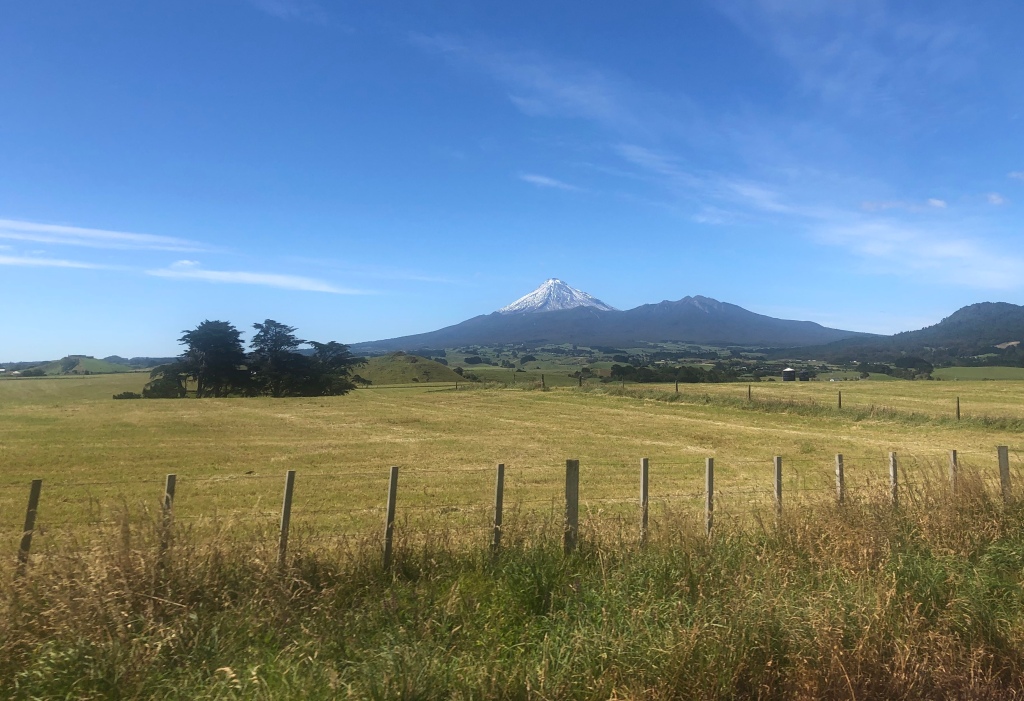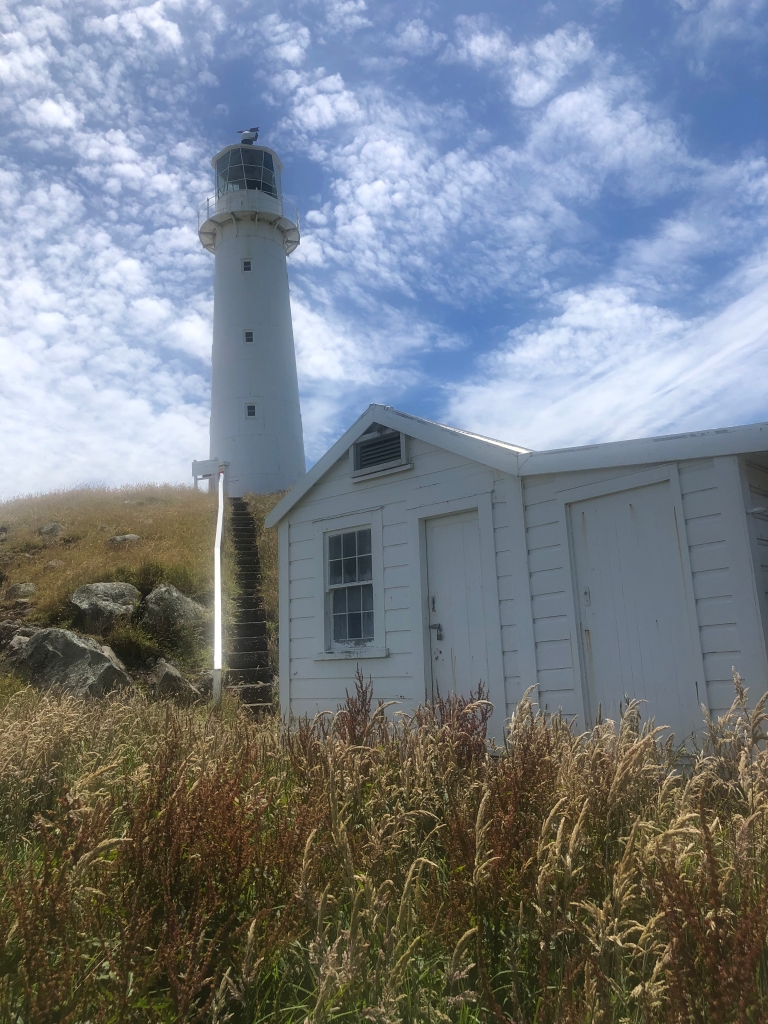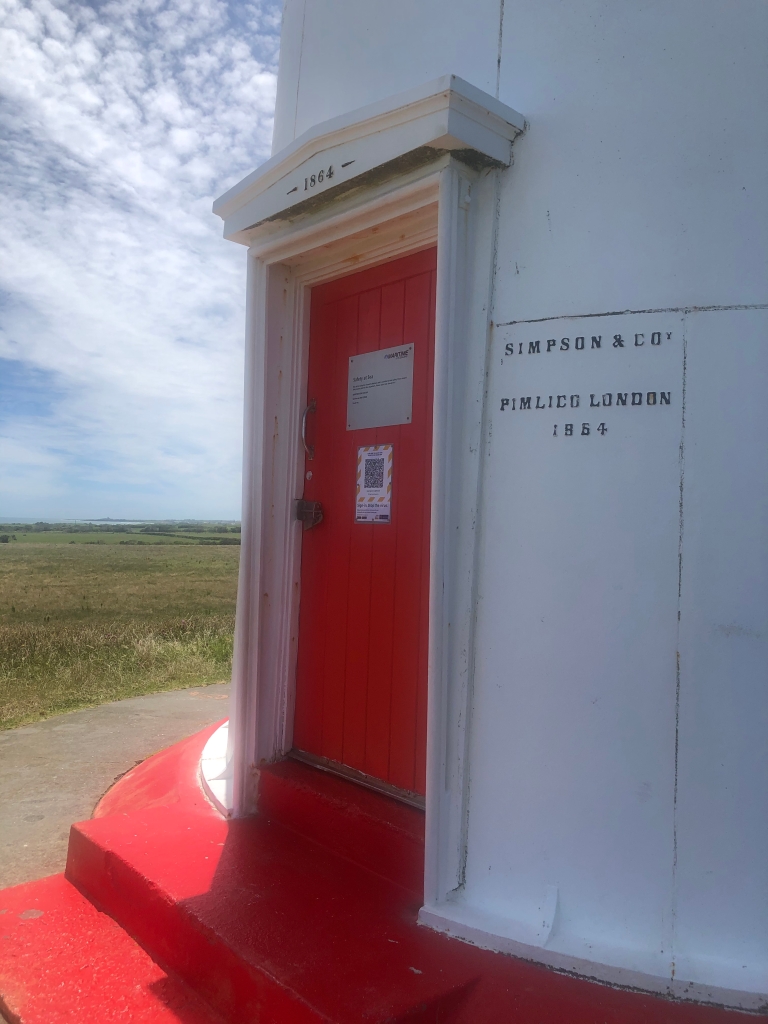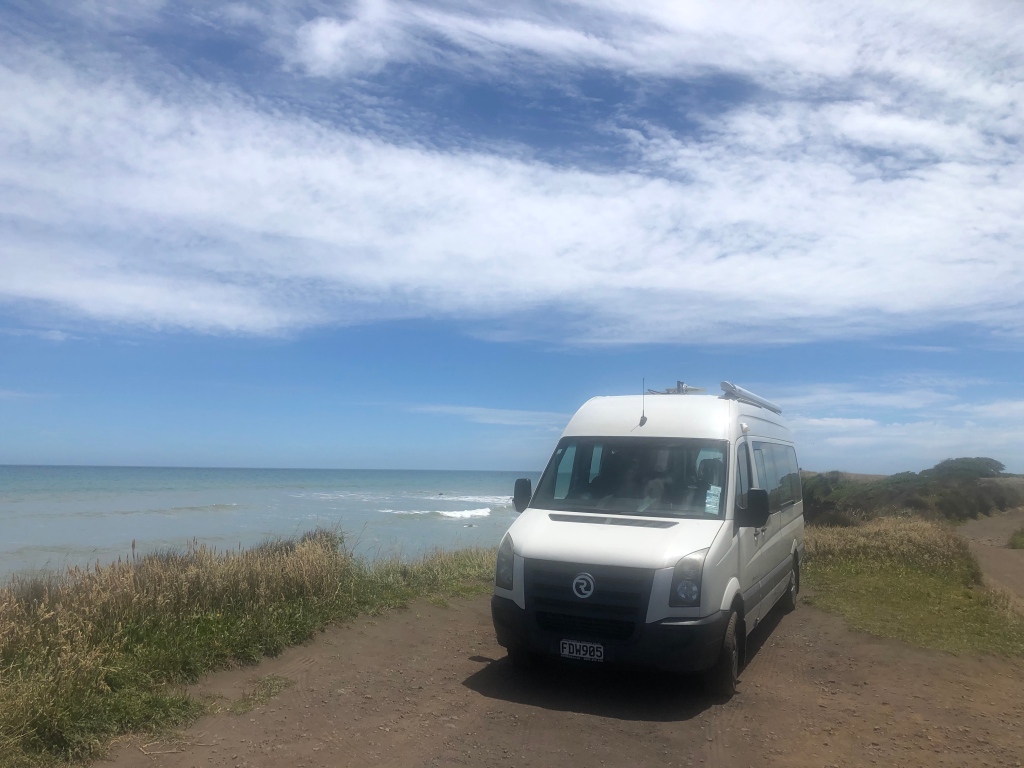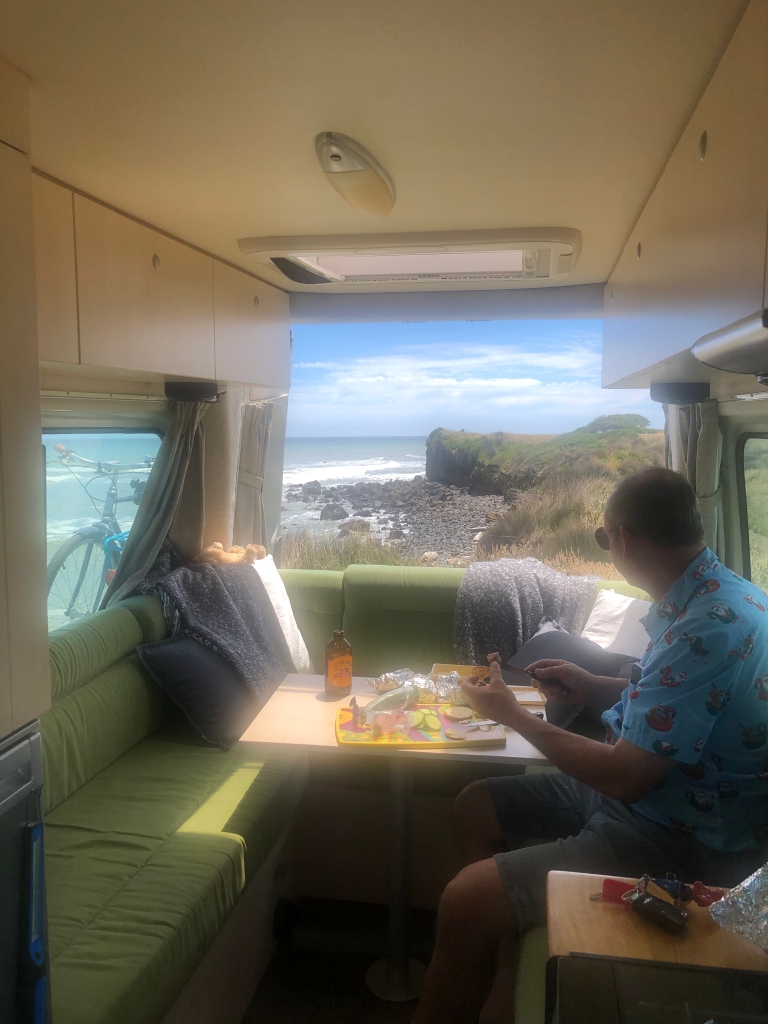Finally, we made it past New Plymouth…. Cape Egmont
After our night in New Plymouth to see the Festival of Lights we set off to explore the other coastal parts of Taranaki. On our previous visits to this region we have only ever got as far as New Plymouth and then either returned northward to the Waikato or once we had a hair-raising return trip via the internal Forgotten Highway road.
That was way back in our early days as kiwis, long before we had the bus or camper. We were travelling in a small people carrier with our 3 kids and my parents, so a total of 7 people and an old trailer to carry all our luggage. Needless to say, the car was cramped, stops had to be as often as possible – but then again not TOO often as it took so long to get everyone in and out of the car’s multiple layers of fold-down seats – and the luggage got dustier and dustier in the trailer. Then the trailer fell apart – well pretty much… the wheels had an issue with staying on, which is generally not very helpful. Yep – that was a memorable trip!
So back to our Taranaki ventures. It was New Year’s Eve and our plan was to travel around some of the South Taranaki coast and find a nice place to camp up and see in the New Year. One thing we’d spotted on the map that we were both keen to go and see was the historic Cape Egmont Lighthouse.
So yes, this is NOT Cape Egmont Lighthouse. It is a lighthouse that looks like the real one, and is just smidgen away from Cape Egmont itself – it’s the Historic Cape Light & Museum – built to house the original 1850’s lighthouse prismatic lens when the Cape Egmont lighthouse was updated with a modern rotating beacon in 1999.
For a small donation visitors can climb up the small replica lighthouse, with each floor providing interesting historical facts on the original lighthouse, early shipping in the region, plus an exhibit on a famous once-local resident; Lord Ernest Rutherford, whose family once ran a nearby flax mill. Rutherford was a New Zealand born scientist who became the father of nuclear physics when he was the first man to split the atom. He also discovered how to date the age of the Earth, invented the first nuclear detector, and his early experiments are said to have lead to the modern smoke detector. The region is obviously superbly proud of its links to this esteemed scientist and the museum provides an interesting display of his life and his family’s life in Taranaki.
Just a few kilometres along the coast from the lighthouse museum sits the real, actual and still working; Cape Egmont Lighthouse – standing proudly looking out over the coast with the ever-impressive Mt. Taranaki in the background.
The lighthouse was built in London and the segments shipped out to New Zealand in 1865. It was first erected on an island near Wellington but caused confusion to shipping as there was another lighthouse already working further down the coast. After dismantling and shipping to Taranaki the lighthouse became operation as Cape Egmont lighthouse in August 1881 when the light was lit to help ships to pass safely.
The cast-iron tower stands 20m high and 33m above sea level, perched on top of a prominent mound.
The 50watt lamp flashes once every 8 seconds and can be seen for 19 nautical miles (35 kilometres)
The light was first electrified in 1951 and the lighthouse keeper was transferred to another station due to staff shortages. In July 1956 the vessel Calm grounded off Cape Egmont during a gale. The keepers then returned to the lighthouse until it was fully automated in 1986.
The lighthouse competes to steal the show in its picturesque landscape which includes the backdrop of a volcanic mountain and some truly beautiful coastline. Although I’m sure in bad weather the lighthouse would win hands-down as a structure of strength and necessary function that’s stood here for 140 years to help nearby ships and vessels stay safe.
The next post will cover where we end up camping for New Year’s Eve.

